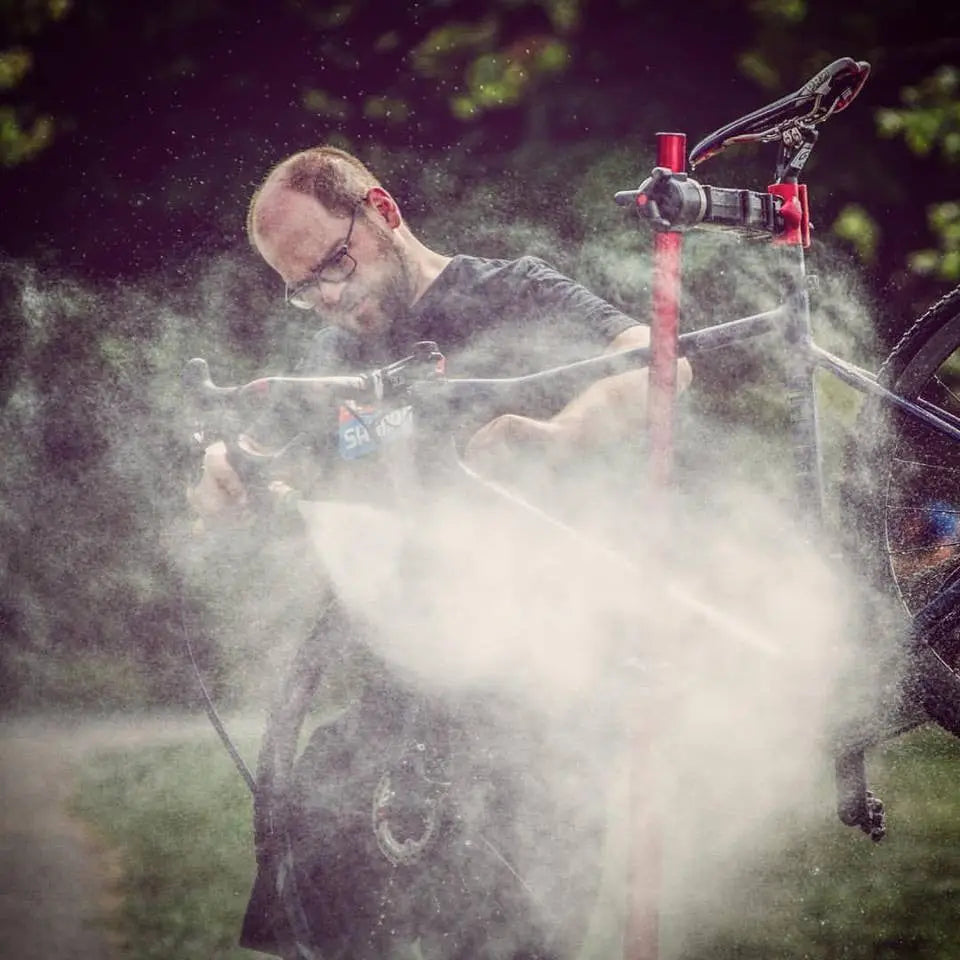You can install all the fancy ceramic bearings in the world, but the effort is quickly lost if you do not pay attention to ALL parts of your drivetrain and how you operate it. In this article we will have a look at how you can get your bike to be as efficient as possible.
Keep your parts clean
This might be an obvious one, but grime and grit cause friction. They also work as sand paper and shorten the lifespan of your expensive chain and cogs. Make a rule for yourself to always show up with the shiniest bike at the group ride. You will feel better, the competition sees you are taking today's ride serious and if anything that will add some placebo watts to your effort.

- Take it easy with the pressure washer! (unless you're a cyclocross mechanic, like Chris Kreidl of the Maxxis-Shimano team, then go for it!)
If you live in a wet climate like I do, it is not always practical to clean your bike for every ride. At the minimum, degrease, dry and regrease your chain, derailleur pulleys and cassette for every ride to get most of the benefits.
Choice of chain lubricant
A ton of research has been done into the friction effects of lubricants and if you want to get into the nitty gritty of it, I'm sure you can find sources online. As a rule of thumb: thin lubricants typically cause less friction, slightly thicker ones are more durable. I have used several wax based lubricants in the past, but the durability is not good enough for me. There is no point of having the lowest friction for the first 60k of your ride and then hear your chain crunching underneath you for the last 40k. The same goes for dry lubes, the ones I have tested over the years washed off with the smallest amount of spray from puddles or a shower.
Personally I like using wet lubes that will last for any length of my ride, adding a bit of friction from the start, but lasting for a ton of miles. Have a look at Dumonde Tech Original if you're in the US, or RSP Black Oil in Europe. Apply a small amount, spin the cranks for a bit and wipe off the excess lube so dirt does not stick to it.
Choose the right gearing. Big sprockets work.
Ever seen Tony Martin's 58 tooth chain ring?? There is no need for a chain ring this size on a flat time trial course. A standard 53x11 can get you at the 50+ km/hr average (if your name is Tony Martin) without any problems or high cadence. The difference between the two set ups is that by running the larger front ring, Tony can choose a larger sprocket in the rear. All this causes less bending of the chain, which reduces friction.

For regular Joe's like you and me, it means that if you have the choice of riding in the big ring and high up the cassette or small ring and low on the cassette, choose the option with the big ring.
Cross chaining is counter productive
If you are running extreme cross over gears (like big ring / big sprocket) the friction in your chain is actually higher than the reduced friction from using the 53 and 28 cogs. I typically try to run my chain up to the third largest cog before shifting to the small ring.
Optimize every component in your drive train
Here is the time to take a look at every part in your drive train . This would not be the Kogel Bearings blog if I did not recommend to upgrade your bottom bracket and wheel bearings to a high quality ceramic version instead of running whatever came stock on your bike. Derailleur pulleys are next: there are hundreds of options, a range of bearing options that will either reduce friction or add weather protection. If you want to go the route of the big pulleys, consider if you can accept the less efficient shifting that is a feature of most after market sets.
Next, make sure that your parts are in good condition: stretched chains and worn out cogs don't run smoothly and can cause ghost shifting if you push things beyond the point of no return.
Conclusion
I have never met a cyclist riding for sports that was not interested in making the bike go faster with less effort. Some things can be achieved for free, with better care and riding technique. Some others can be achieved by swiping your credit card.
Drive train efficiency is a real thing and one of the parts of total bicycle drag that deserves your attention.

